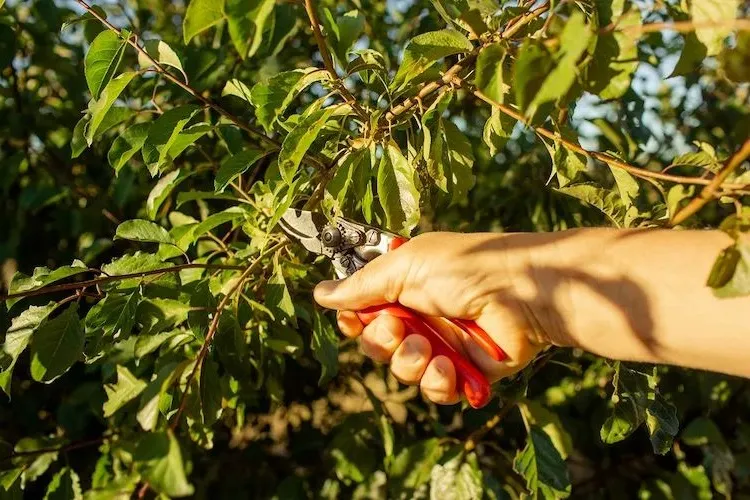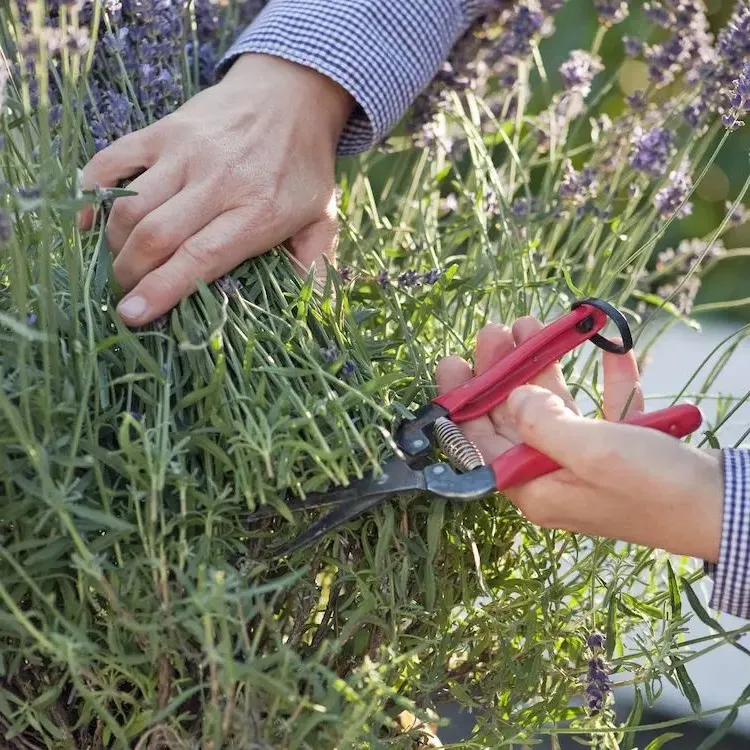Most woody plants are pruned in fall or spring. However, there are some species that benefit much more from pruning in late summer, and we tell you why this is the best time.
Summer is almost over, but gardening doesn’t end there. Late summer is the perfect time to prune many flowering shrubs and fruit-bearing trees in the garden to strengthen them and improve their harvest. It is also the best time to prune some fruit trees that tend to “bleed” if pruned at other times, as the temperatures are not as cold and the pruning wounds heal better. Find out which woody plants to prune in late August and early September and how to prune them properly in this article.
Pruning Woody Plants: The Species You Should Care for in Late Summer

In late August and early September, plant growth slows down as fall is just around the corner. This is the perfect time to look after and maintain your woody plants, as dead patches are easier to spot when the foliage starts to thin out. But which woody plants should you prune now and how? Find out here how to prune successfully to maintain the beauty of your garden and ensure the health of your plants.
Which Fruit Trees to Prune in Late Summer?

Certainly, the beginning of September is the ideal time for pruning, as the growth of trees slows down. But only certain fruit trees should be pruned now. When doing so, be careful not to remove too many branches at once so as not to endanger the health of the tree. Radical pruning can cause the fruit tree to lose vital energy resources and become more susceptible to diseases and pests.
- Apricot, peach and nectarine trees can benefit from a light pruning in late summer, removing dead, diseased or poorly aligned branches. If you have noticed an overabundance of fruit on this or that part of the tree this year, now is the time to thin it out a little.
- Fig trees and kiwis also benefit from a maintenance pruning in late summer. This optimises fruiting and improves their shape and balance.
- Walnut tree: This tree is prone to sap leakage and therefore pruning should definitely be done in late summer when sap pressure is much weaker. It is particularly important not to remove more than 20 % of the crown, as the walnut tree does not tolerate heavy pruning.
- Sweet cherry: While most fruit trees are pruned in winter, pruning in late summer is better for sweet cherries as the pruning wounds heal better in warm and dry weather and the tree is less susceptible to disease. Pruning should be done after harvesting by restricting excessive growth.
- Birch trees “bleed” heavily when pruned after winter dormancy. Therefore, the best time to prune birch is in late summer or early fall. In this way you not only avoid sap flow, but also a heavy insect infestation and the transmission of diseases on the cut. With young plants, it makes sense to remove the lower branches to obtain a long, white trunk.
- Apple trees: Weakly growing apple varieties are best pruned in late summer, when the fruit has already been picked. It is a good idea to thin out the crown by removing any branches that are too dense. Shorten all old shoots and those that bend inwards to strengthen the tree.
- Plums, greengages and mirabelles should also be cared for before fall by removing the new branches that do not bear fruit and those that cross or bend too much towards the inside of the tree. Crown thinning is necessary to encourage the growth of new fruiting wood.
Also read: Which Trees Should Not Be Pruned in October?
These Shrubs Need Maintenance Pruning

The end of summer is the best time to prune certain shrubs in the garden. Remove all old branches to encourage new shoots and stimulate growth.
- Lavender: Pruning helps to keep the shape of the plant. Remove all faded parts of the plant and cut back the shoots by about 5 cm.
- Rose bushes: It is advisable to prune roses in late summer, as they can usually flower again before temperatures really drop in October. Remove all dead and crossing shoots to keep your beautiful rose bushes in shape.
- Jasmine: Thinning pruning is necessary for winter jasmine and true jasmine in early fall. However, make sure that the jasmine is not pruned after the end of September and ensure that the plant is properly overwintered.
- Summer raspberries should be pruned after harvest. When doing so, remove the worn canes and thin out all new, one-year-old canes.
- Currants and gooseberries should be pruned after harvest in August or September so that they bear well. Leave a few old branches and cut off the remaining old shoots close to the ground. Shorten overlong shoots by half.
Prune Climbing Plants Before Fall

For some climbers, pruning in late summer is also much better tolerated.
- Virginia creeper: It requires pruning in late summer to avoid encroaching on and damaging gutters or shutters. Cut off all mature shoots up to one metre from the roof.
- Clematis varieties that flower in spring should also be pruned lightly at the beginning of September. To do this, cut back each shoot up to 20 cm.
- Blue rain and ivy: Cut off everything that has faded, remove old branches and shorten the main shoot by 15 cm.
- Vines: After you have harvested the grapes, late summer is also the right time to prune vines and control their growth. Again, remove unwanted shoots to promote good air circulation and evenly distribute the future grapes.
Caring for Hedging Plants in Late Summer

Hedges should also be pruned in late summer to keep them in shape. However, this should only be done if the hedge does not provide a habitat for birds and forest animals.
- Boxwood is an example of this, which should be pruned both in spring and between late August and early September to keep it in shape. Pruning in late summer will help to keep the hedge or topiary looking neat during the winter months. Remember that pruning should be done in rainy weather to prevent yellowing of the ends.
- Cedars: Pruning on this plant is limited to limbing up the trunks only, avoiding major pruning wounds. Also remove individual, troublesome branches.
Pruning Woody Plants: What Should You Bear in Mind When Pruning?

Late summer pruning is usually not radical. In most cases, it consists of removing faded flowers and dead branches that weaken the plants.
Use very sharp tools such as scissors and saws, which you disinfect again between each plant. Always try to cut in such a way that you leave smooth cut surfaces and do not create large wounds that are susceptible to pests and diseases.
Do not forget to water the plants well in the days before pruning. Plants that suffer from drought should not be pruned.
Curious to know which plants you can plant in a raised bed in September? Read all about it now!
